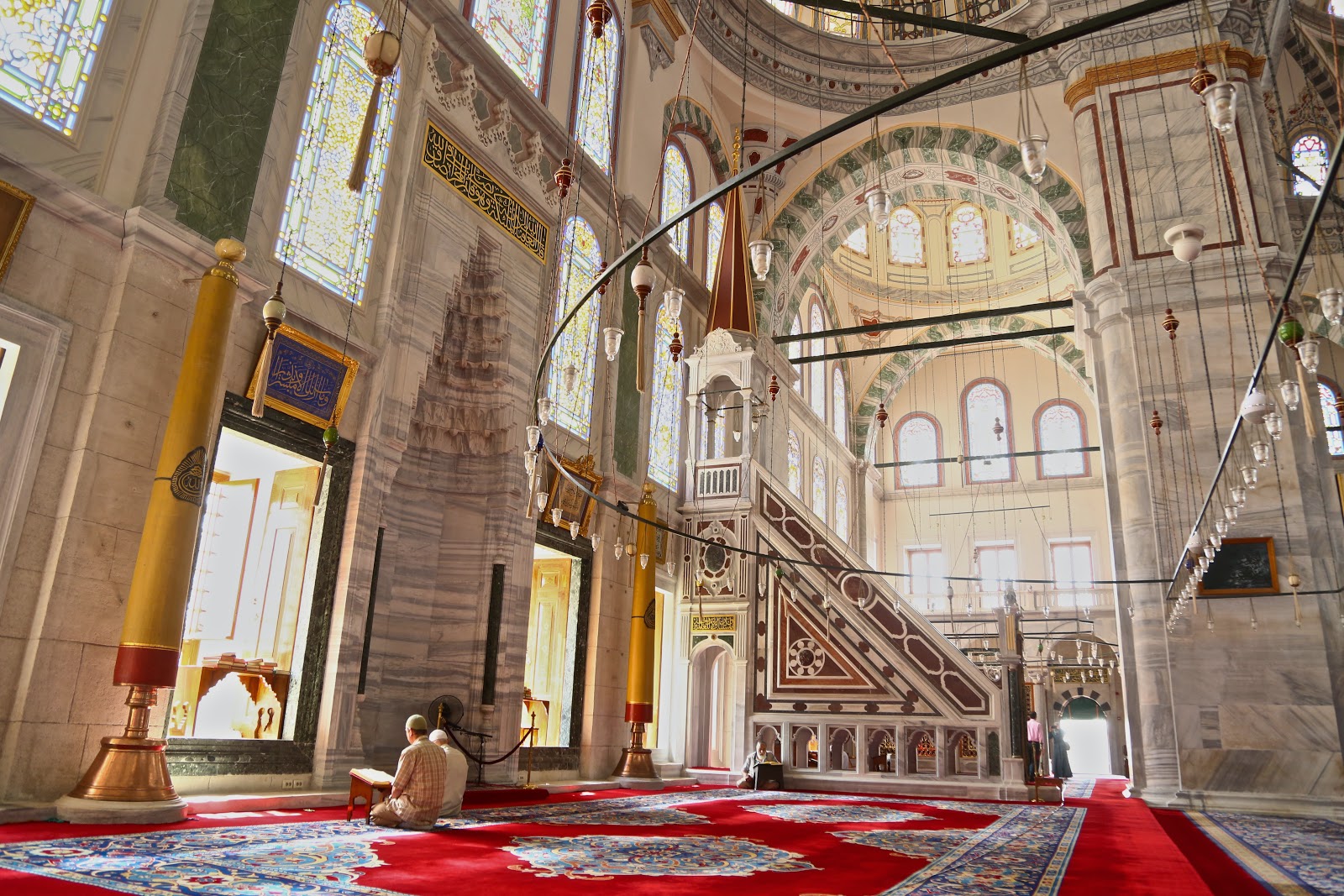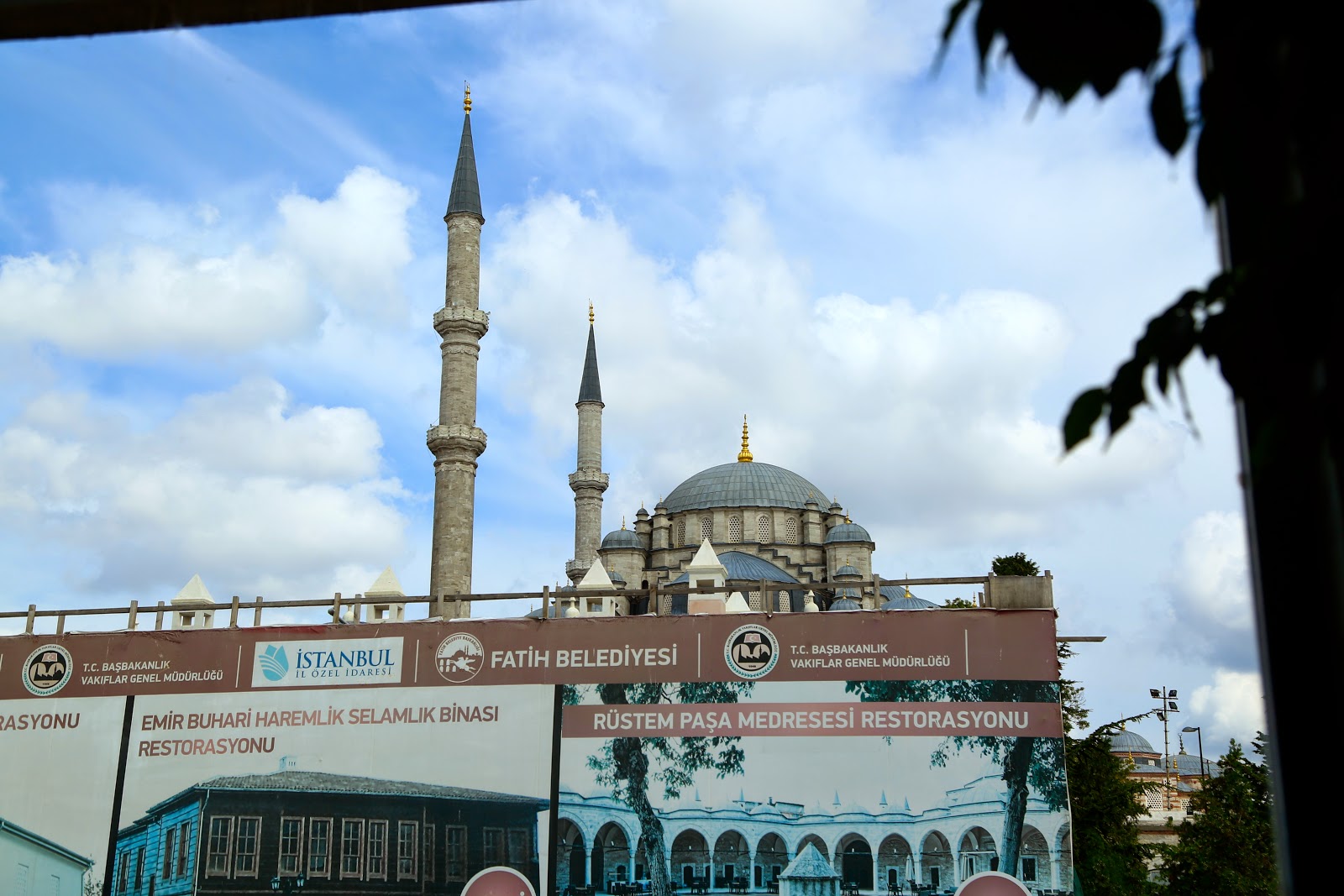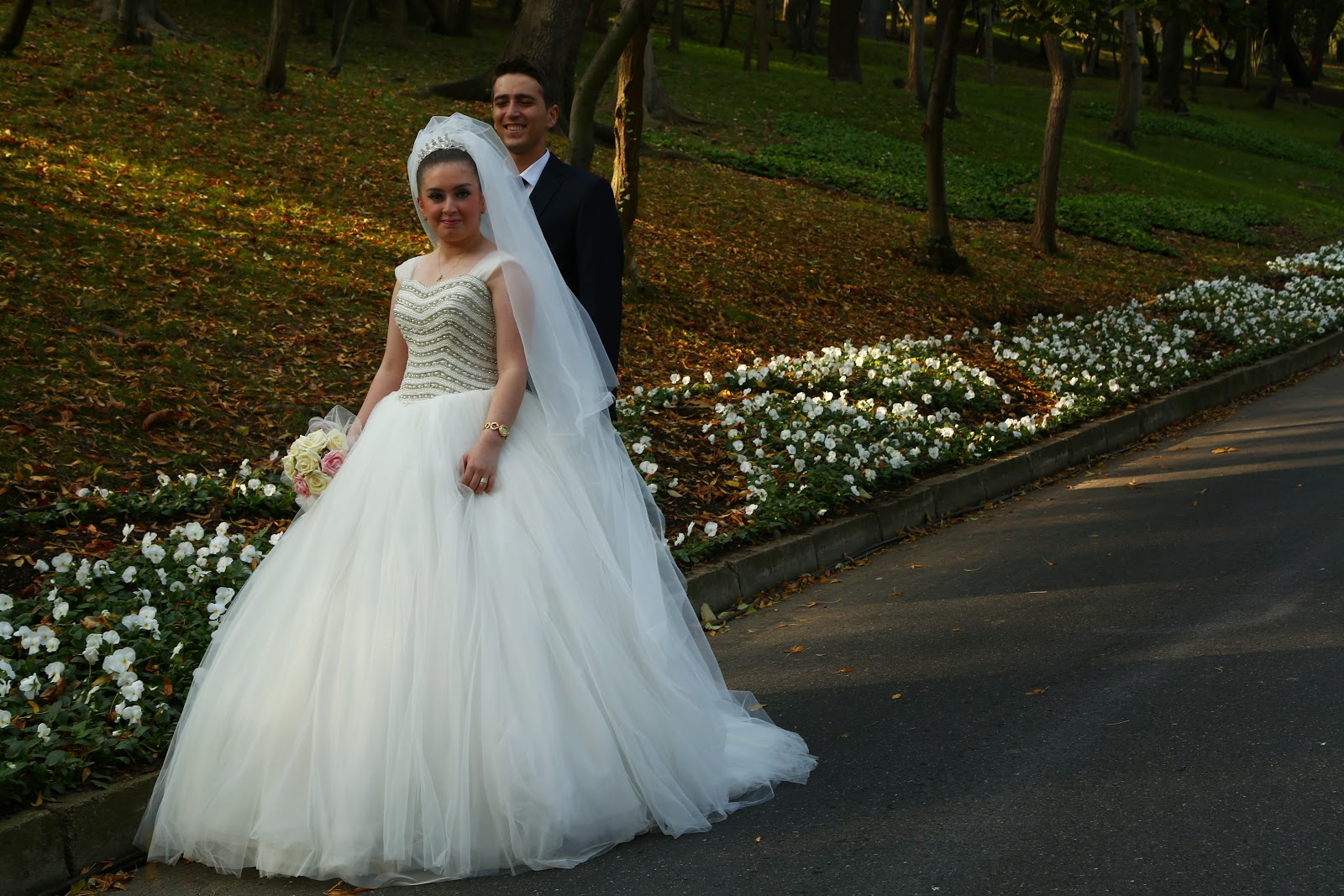Fatih is thought of as one of Istanbul's most conservative districts. Its focal point is the fortress-like Fatih Mosque, which was built in celebration of the Sultan Mehmed II, the great Ottoman leader who aged 21, wrested control of Constantinople from the Byzantines and was accordingly nicknamed "Fatih" (The Conqueror).
Fatih Mosque courtyard.
To get there you can take a bus No. 31E, 336E or 38E from Eminonu, or No. 87 or 32 from Taksim. At first glance it may strike casual visitors as more obsessed with weddings than religion since its main street, Fevzi Pasa Caddesi, is lined with shops selling alarmingly over the top wedding dresses.
Wedding dresses at Fevzi Pasa Caddesi.
The Fatih Mosque was constructed immediately after the conquest of the city in 1453 over the ruins of what had been the enormous church of the Holy Apostles where many of the Byzantine emperors and their families had been buried. It was designed bu an architect called Atik Sinan who should not be confuse with the 16th century genius generally known as Koca Mimar (Architect) Sinan and the sturdy walls surrounding medreses make it look almost as fortified as a castle.
Fatih Mosque complex.
An earthquake in 1766 badly damaged the original mosque, which was reconstructed in baroque style by Mehmed Tahir Aga between 1767 and 1771; of the original building little remains bar the courtier the entrance gateway, the mihrab and the lower parts of the minarets.
Fatih Mosque's entrance gateway.
Since then some parts of the complex have also been torn down although the eight medreses still survive, along with the 18th century Carulah Efendi Library. At one time the complex may have been able to accommodate almost 1,000 students.
20 domes supported on columns.
One of the more unusual features of the mosque complex is the restored tabhane, or dervish inn, whose 20 domes are supported on columns that may have been taken form the Church of the Holy Apostles.
Fatih Mehmed's Tomb.
Fatih Mehmed himself is buried in a superb tom to the rear of the mosque where the reverent can always be found reciting passages from the Koran. It was the custom for newly crowned sultans to come here immediately after visiting the mosque at Eyup in the hope that they would soak up some of the Conqueror's greatness for themselves. Fatih Mehmed's wife Gulbahar Sultan is buried more modestly nearby.
Visitors standing on the walls of Fatih Mosque.
As with other imperial mosques in Istanbul, the Fatih Mosque was designed as a kulliye, or complex with adjacent structures to service both religious and cultural needs.
.
Interior
The first Fatih mosque had one central dome supported by a single semi-dome of the same diameter on each side and suspended on four arches, its dome was 26 meter in diameter. The second mosque which was built (1771) by Sultan Mustafa III after the 1766 earthquake, was built on a square plan. It has one central dome supported by four semi-domes.
Interior's view of Fatih Mosque.
Marble columns and main chandelier.
The 26 meter diameter center dome is supported by four semi-domes on each axis supported by four large marble columns. There are two minarets each with twin galleries.
Main Dome.
The calligraphy within the mosque and the mimbar exhibit a Baroque influence, but the white tiles of inferior quality are a poor comparison with the İznik tiled splendor of mosques such as the Rüstem Pasha Mosque.
Semi domes.
Upper level view of the semi domes.
Mimar and Mirhab of Fatih Mosque.
Mihrab (prayer niche) and side of minbar (pulpit) of Fatih Mosque. The mihrab dates from the original construction.
Mimar and Mirhab of Fatih Mosque.
Faithful.
"Fatih Mosque imposes a feeling of physical, as well as religious, humility on the faithful" Constantitnople- City of the World's desire by Phillip Mansek, 1995.
Side view of the Mosque.
Sultan's prayer area.
Main chandelier.
Upper view of side gallery.
Main entrance/exit door's view.
.
Courtyard
The courtyard, main entrance portal and lower portions of the minarets remain from the original construction, with the remainder consisting of the 1771 Baroque reconstruction.
View of the courtyard of Fatih Mosque with ablution fountain at center.
Courtyard Fountain.
Visitors sitting on halls of the courtyard.
Tiles adorning the doors to the Mosque.
Abolution fountain.
On their way to the Market.
.
Surroundings
To see real religious conservatism in action you need to exit the Fatih Mosque on the north side and explore the district of Carsamba.
Fatih neighborhood.
Every Wednesday there is a market where you can find fruits, vegetables, fish, and different cloths and supplies for the Turkish families.
Wednesday Fatih Street Market.
Vendor outside the mosque.
Fruits and vegetables.
Pashmines.
Fish vendor.
Clothes.
Fevzi Pasa Caddesi restaurant's view of Fatih Mosque.
I couldn't get a complete picture of the mosque since there are still many construction around it but I hope to at least give you and idea of what Fatih Mosque is all about.
As of now I hope you enjoy the views!
Soreya Reyes
www.searchingforemotion.com
STREET LIFE AND DOCUMENTARY PHOTOGRAPHY
Twitter: @street_photos_
Instagram: street.photos.soreyar
Twitter: @street_photos_
Instagram: street.photos.soreyar
























































